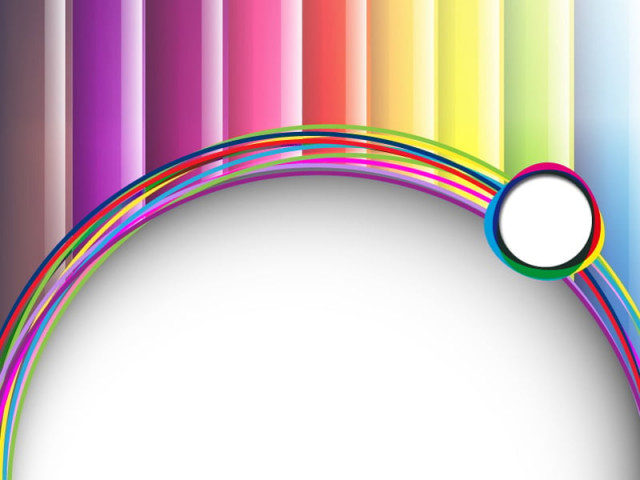Colour concepts
Studies show colours have distinct impact on our behaviour, moods; can also have a nurturing quality.

Colour concepts
Artists and interior designers have long understood that colours are a powerful communication tool and can be used to signal action, influence mood, and cause physiological reactions. Certain colours can raise blood pressure, increase metabolism, or cause eyestrain.
While Feng Shui was the ultimate fad in interior decorating until a few years ago, a more effective way to change the look and feel of your home is by deploying colour successfully. Studies show that colours, in addition to adding oomph to our lives, have a distinct impact on our behaviour and moods and, in the right context, can also have a nurturing quality. So, rather than keeping the furniture at awkward angles, learn how you can use colours to improve the ambience of your den.
Purple / Violet
The colour is used to denote royalty and elegance. It’s thought to encourage spirituality, intuition, wisdom, mastery, mental strength and focus.
If you’re planning to incorporate purple in your home, try blending it with more natural colours like subtle pinks or greens. In your bedroom or living room, you can pair it with neutrals such as off-white or beige and even dull gold to get your desired high-on-class/low-on-budget look. Remember that too much of this colour is thought to promote pride and gives your home a distant, unnatural look. A way around this is to use purple accents — purple flowers are a great way to add a hint of this colour in your living/bedroom.
If you are on a diet and want to put a lid on those snack breaks use as much lavender around you as possible. Lavender suppresses the appetite, plus it’s a light colour which could help you feel lighter about yourself.
Brown
Brown has a down-to-earth personality, which is why it is a favourite with nature lovers. In interior decoration, brown is used as a neutral to balance out extreme colours and often gives off the impression of natural wood.
Incorporate it in the living room by adding a brown carpet or sofas — even something as small as a wall clock in brown can bring a hint of nature indoors. Brown also works well with cool colours such as pink, blue, beige and green. For a tasteful, contemporary look in your living room, pair light brown with orange and beige. This combination will give you the right amount of warm (orange) and spicy (beige and brown) notes.
Too much brown in the bedroom can bring dullness to your mood and put a damper on your energy level so restrict it to the bed and windows.
Green / Blue
The phrase ‘greener pastures’ says it all, I suppose. Green is believed to be the most positive colour in the spectrum and is thought to encourage emotional stability and morality. This colour is associated with the heart area and has proved beneficial for people suffering from traumatic emotional experiences in love. Studies show that people who have green walls around them experience fewer stomach problems. Blue, on the other hand, is thought to enhance verbal expression and communication, artistic expression and willpower. The colour’s calming properties also help insomnia, anxiety, throat problems, high blood pressure, migraine and skin irritation. Cool colours like blue and green are therapeutic for people with depression.
Calming shades of blue, green and even lavender are great in the bedroom. Blue is a particularly good colour to pair with warmer tones, with sky blue making an interesting combination with hot orange. However, if you are not a big fan of these colours, invest your money in a blue or green lava lamp and keep wherever your family hangs out the most. These colours cause the release of chemicals in the body that calm your nerves and have an overall soothing effect on your body.
Indigo
Indigo has purifying and cleansing properties. It’s said to encourage greater intuition and strengthen the lymph system and the immune system. We love it because it’s a sweet-spicy mix of blue and violet and if you don’t want to cheat on these two colours, just adopt their offspring and treat it like your own.
Indigo is a great choice to jazz up the living room but, like purple, it should be used in small quantities as it could make your house come across as somewhat cold. If you’re using this colour for your curtains, balance it out with some neutrals and give a hint of indigo elsewhere in the room. We would suggest you go for a lamp with an indigo light or maybe a show piece in this hue. Anything more than this, will just make your room look like an ink pot.
Red / Pink
The general belief about red is that it increases blood circulation, leading to an instant physical boost, and clears congestion. It is linked to the lower body, especially the spine, hips and legs. From Marilyn Monroe’s ruby lips to Gwen Stefani’s nail colour, red has also been associated with emotionally independent women who are open to taking risks.
Red has been shown to increase appetite — one of the reasons that many restaurants choose red patterns in their dining rooms and why you should go code red in the kitchen. Of course, unless you want your kitchen to look like a substandard Chinese dhaaba, refrain from painting the walls red. Instead, add a tinge of spicy, brown-toned reds to your cabinets or even your dining table. Red brings life and energy to otherwise dull, uninviting spaces. You can use it to neutralise cooler colours like greens and blues and give warmth to a room. It’s easy to introduce red to a room with flowers, throw cushions, vases or other decoration pieces.
Even though we love this sensual colour it’s our job to tell you that it comes with its own set of pitfalls. Studies show that people who get exposed to red on a daily basis have increased aggression and anger issues. While a good choice in the kitchen, dark shades of red in other rooms of the house are often associated with high blood pressure and irritability.
Pink, a love child of red and white, is the default colour choice for decorating a little girl’s room. While pink evokes empathy and femininity, it’s a colour people get overdosed on very easily and making it the dominant colour in your little princess’ room may lead to her throwing tantrums and getting agitated over the smallest issues. Try pairing pink with soft orange, yellow or even blue to add variety to your child’s room.
Mix pink with neutrals to give a trendy, soft look to your living room. In other rooms of the house, pairing soft pink with accents of whites and creams gives a rosy appeal as long as the pink isn’t overdone. Add dash of pink to your white bathroom with towels, keeping fake flowers or a floor mat in that colour for a fresh look. In the dining room, pale pink with green and a dash of beige gives a soft French Country look. You can also pair the femininity of pink with the very masculine brown to create a unique combination. The dark browns keep the pinks from appearing too frothy.
Orange / Yellow
Orange is the colour of joy, socialising and optimism. Associated with the abdominal area, it is believed to benefit the kidneys, urinary tract and the reproductive organs. Sometimes asthmatic patients are advised to paint their rooms orange as this colour is also associated with improved lung function. Yellow, on the other hand, is linked to chirpiness and vivacity. Like orange, this colour is said to increase emotional vitality in patients suffering from depression.
Dark, earthy tones of orange create a great mood which is why these hues are ideal for the dining room. They stimulate conversation and eating while creating a dramatic environment. Use bright hues of orange and yellow to make the tighter, stuffier corners of your home seem bigger or add them to your living room by throwing in toss cushions, artwork, an area rug, or lamps to add a splash of colour. You can also use vibrant hues like yolk yellow or even light orange in the sofas.
We suggest you keep orange out of bedrooms and bathrooms where they could become overwhelming and have an adverse effect on your mood. Also beware that too much yellow can make you as hyper as a five-year-old on a sugar rush and may distract you from the important chores waiting for your focus.
Black
While black represents widowing, death and evil powers, it also stands for power, social prestige and elegance.
Black is mostly used in interiors as the ‘eyeliner’ of the place. You can use it in picture frames, small corner furniture such as a coffee table, cushions or even as the main sofa in the room.
Using black in small rooms is a bad idea as the colour makes the walls seem tighter making the room look smaller than it actually is. Black is also a big no-no for a teenager’s room since it has a dark effect on the mood which is the last thing one would want for an emotionally unstable teenager.
White
White is associated with purity and cleanliness which is why bathroom fixtures and fittings are usually in white or silver. To our eyes, a white bathroom looks cleaner than, say, a light blue bathroom.
Use white in the windows, ceiling and doors to give a clean look to your guest room. It’ll give the effect of serenity and purity. But beware of using white in the entire room as it takes away the customised, personal feel of a room. While the excessive use of white does create the illusion of space, it also makes the room look boring and cold. Also, it makes more sense to have coloured walls since you won’t have to spend too much on decoration pieces.
Published in The Express Tribune, Ms T, November 4th, 2012.
Like MsT on Facebook and follow at @TribmagMsT for your dose of girl talk



















COMMENTS
Comments are moderated and generally will be posted if they are on-topic and not abusive.
For more information, please see our Comments FAQ